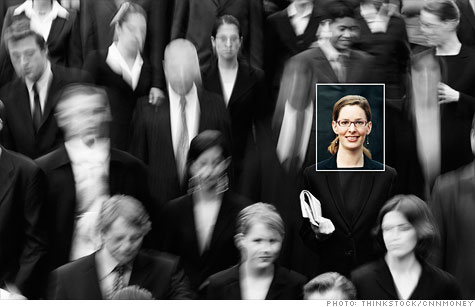Search News

Face recognition and detection is real, but the government doesn't yet have a way to protect its citizens from potential abuse of the technology.
WASHINGTON (CNNMoney) -- Face recognition and detection technology is becoming cheaper, faster, and much more commonplace, raising the question of whether people will be able to remain anonymous in the near future.
Digital signs and sensors that detect and recognize faces are no longer a matter of science fiction. They are real and are popping up everywhere from malls to bars to smartphones.
So what's protecting you from Big Brother tracking your movements and invading your privacy? As of right now, technology is the only significant barrier.
Today, the technology is not quite robust enough to snap a photo of someone on the street and instantly know who they are. Computer processors aren't fast enough to scan across billions of images in real time to match an offline face to an online photograph. But that's coming soon.
"To match two photos of people in the United States in real time would take four hours," said Alessandro Acquisti, professor of IT and public policy at Carnegie Mellon University's Heinz College. "That's too long to do in real time. But assuming a steady improvement in cloud computing time, we can soon get much closer to that reality than many of us believed."
Acquisti and his research team at Carnegie Mellon have already developed a proof-of-concept iPhone application that can snap a photo of a person and within seconds display their name, date of birth and social security number.
Currently, the reference photos have to be uploaded to a database, but Acquisti said that processing speeds will soon become fast enough to do the whole process online and in an instant.
Since 1993, the false positive rate for identifying faces has been halved every two years, reaching 0.003% by the end of last year, according to the National Institute of Standards and Technology.
Though computers still have difficulty identifying faces in low light or poor photo quality, programs are now able to capture a profile of a face, build a 3D model of it, rotate the photo and identify the person the face belongs to.
If a future in which you can always be identified really is around the corner, what will stop advertisers or even the government from putting names to previously anonymous faces of people walking into a store, strolling down the street or protesting a convention? That's what the Federal Trade Commission sought to find out at a facial recognition policy conference in Washington last month.
The answer as of now: industry self-regulation. The Digital Signage Federation, a consortium of companies operating digital signs that detect or recognize faces, developed privacy guidelines that require consumers to "opt-in" to being detected or recognized. But that "opt-in" can be made as simply as walking into a store that posts on its window that it detects faces.
Privacy advocates and lawyers representing face recognition companies agreed that the kinks need to be worked out of the system. As of today, no laws or regulations specifically prevent your face from being detected or recognized without your consent.
"Is U.S. privacy law ready for facial recognition? It's not even close," said Daniel Solove, professor at the George Washington University Law School.
The solution, however, isn't easy. Warning people that a particular venue is equipped with face detection technology means the only way for people not to be detected would be to avoid the location. But what if it's a drug store and someone needs to get a prescription?
What about a "do not track" registry of faces? Even if that technology could be developed, it's not feasible to ask everyone to submit a photo and unpalatable for many to opt-out of a system that most believe should be opt-in.
Some suggested a red line denoting a face recognition area or even separate entrances. But what about digital signs on the sidewalk?
"Wear a mask," said John Verdi, senior counsel of the Electronic Privacy Information Center.